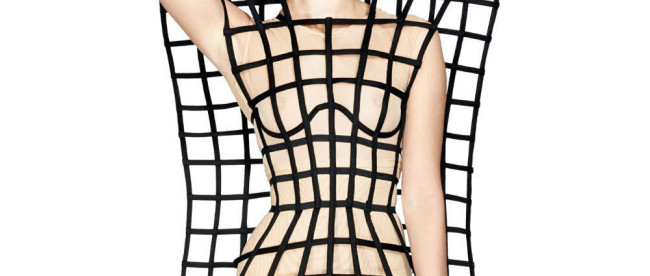3D Printing: Is the Law Prepared for the Future of Fashion?

By Arielle Padover
Commonplace three-dimensional (3D) printing may seem far off; however, it seems to be arriving quicker than some might have anticipated, particularly in the fashion industry. According to David Sheffler, a researcher and lecturer at the University of Virginia School of Engineering and Applied Science, “3D printing is where PCs were in the late ‘70s and early ‘80s.” In fashion specifically, Joris Debo, the creative director of Materialise, notes that while it is “a slow process of adoption,” 3D printing in fashion has changed “quite rapidly” in the past few years. While we probably have quite a while before people can say “I’ll be ready as soon as I print my shoes,” it is extremely important that lawmakers proactively address the legal issues that will inevitably arise due an increase in 3D printing.
3D printing allows people to turn a digital file into a three-dimensional object by successively layering material until the object is formed. 3D printing has been gradually making its way into the mainstream, with companies like UPS and Staples offering 3D printing services. It will likely continue to become an even more familiar process as 3D printers become increasingly more affordable and, therefore, more accessible to small businesses and even individuals.
While 3D printing isn’t quite the norm in the fashion world yet, it is an emerging trend. Last year, Adidas introduced the Futurecraft 3D prototype, “a 3D printed running shoe midsole which can be tailored to the cushioning needs of an individual’s foot.” In May, the Metropolitan Museum of Art’s Costume Institute Benefit unveiled an exhibit entitled “Manus x Machina: Fashion in an Age of Technology,” which featured various articles of clothing made using 3D printing technology. In August, Michael Phelps sported a pair of Under Armour 3D printed sneakers at the Rio Olympics, customized with his son’s footprint on the sole of the shoe. Even for those of us who are not Michael Phelps, it is easy to find 3D printed products such as jewelry, eyewear, and shoes on the market. 3D printing is beginning to play a more prevalent role in fashion.
In the future consumers may be able to purchase the digital file of an item and print their clothes at home using that file. Among other benefits, this process will likely open the door for customer customization, allowing customers to tailor their clothes to fit them exactly or change aspects of the clothes that they do not like.
Along with these benefits, however, this new technology brings new legal problems. Hip-hop artist and fashion designer Kanye West has expressed concerns that 3D printing will ruin the fashion industry in the same way that “the Internet destroyed the music industry.” That is, he is concerned that 3D printers will enable people to make counterfeit and knockoff goods in the same way that peer-to-peer file-sharing services like Napster enabled the illegal download of music. These concerns are not invalid: a recent study found that almost 10% of clothing, shoes, and accessories sales in Europe are lost to counterfeiting, directly resulting in over 300,000 jobs lost (over 500,000 including jobs lost indirectly) and €26.3 billion of revenue lost each year (approximately $29 billion USD). The law will have to find a way to prevent these statistics from being exacerbated by 3D printing.
In addition to concerns related to preventing counterfeiting, other intellectual property issues are raised by 3D printing apparel. For example, if a customer substantially customizes a 3D printed top by changing the V-neck to a scoop neck, changing the color, changing it from being long sleeved to short sleeved, or does all of the above, who will be deemed the owner of the “new” design? The owner of a design is entitled to prevent others from using that design. However, when the lines regarding ownership are blurred, protecting designs becomes difficult. Leaving designs vulnerable to exploitation could result in designers not receiving due credit for their work and dilution of brand equity. Without these protections, the fashion industry would likely be negatively impacted because designers will no longer be motivated to innovate.
Product liability issues and regulatory issues will also likely come up. The government will need to put laws in place to address which party (the designer, the digital file creator, the customer, etc.) is responsible for defective apparel products when the customer is the de facto manufacturer of the goods. Further, in the United States, textile and apparel products must have a label containing certain information, and it will become important that the government is able to continue monitoring labeling practices if apparel is printed at home.
This is not to say that the future of the fashion industry is doomed. Despite Kanye West’s worries, just as the Internet did not “destroy” the music industry, 3D printing will likely not destroy the fashion industry. Laws were adjusted and created to better address the issues created by updated technology as it pertained to music. Similarly, courts will need to adapt and interpret existing laws to answer the questions that 3D printing raises and lawmakers will need to create new laws to answer the questions that the existing legal framework cannot. So, while the prospect of printing clothing at home may seem incredibly convenient, the convenience may not be worth the risk until the legal questions are addressed.
